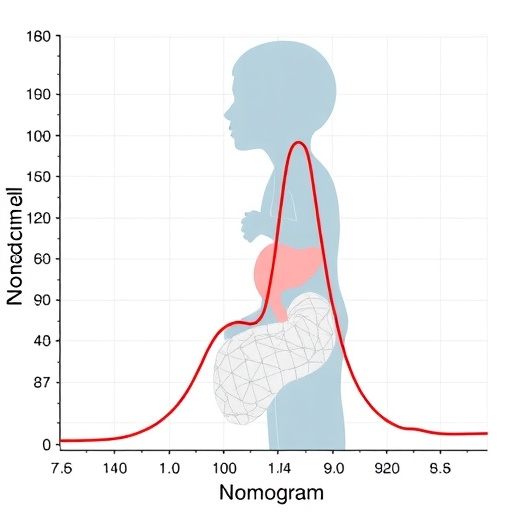An intervention combining behavioral weight loss treatment and problem-solving therapy with as-needed antidepressant medication for participants with co-occurring obesity and depression improved weight loss and depressive symptoms compared with routine physician care, according to an article published in the Journal of the American Medical Association.
Obesity and depression commonly occur together. Approximately 43 percent of adults with depression are obese, and adults with obesity are at increased risk of experiencing depression. To treat both conditions, patients must visit multiple practitioners usually including dietitians, wellness coaches and mental health counselors or psychiatrists. The burden associated with visiting multiple health care providers consistently over the long periods of time required to treat obesity and depression can be significant and lead to dropping out of therapy altogether. Additionally, these health services may not be available due to a lack of trained providers or reimbursement, and the cost of seeing numerous specialists can be prohibitive.
“Treatments exist that are effective at treating obesity and depression separately, but none that address both conditions in concert, which is a critical unmet need because of the high prevalence of obesity and depression together,” said Dr. Jun Ma, professor of medicine in the University of Illinois at Chicago College of Medicine and principal investigator on the study. “We have shown that delivering obesity and depression therapy in one integrated program using dually trained health coaches who work within a care team that includes a primary care physician and a psychiatrist, is effective at reducing weight and improving depressive symptoms.”
Ma and colleagues analyzed results of the Research Aimed at Improving Both Mood and Weight (RAINBOW) randomized clinical trial, which compared an integrated collaborative care program to treat co-occurring obesity and depression — delivered by trained health coaches — with usual care provided by a personal physician in primary care settings.
The RAINBOW weight loss intervention promotes healthy eating and physical activity, while the psychotherapy portion focuses on problem-solving skills. A psychiatrist is able to recommend adding antidepressant medication if needed, which the participant’s personal physician would prescribe and manage.
Health coaches trained to deliver this integrated program worked in consultation with a primary care physician and a psychiatrist who jointly reviewed the clinical status of patients and advised on treatment adjustments for patients who were not progressing. The primary care physician and psychiatrist did not have direct contact with patients, nor did they prescribe medications or furnish other treatment to patients in the program directly. Their role was supportive and consultative to the health coaches with whom they worked as a team. This care team communicated and collaborated with patients’ personal physicians who oversaw the patients’ care, including prescribing medications, providing treatments for medical conditions and making referrals to specialty care when needed.
Participants in the RAINBOW trial included 409 patients with obesity and depression. All participants received usual medical care from their personal physicians and were provided with information on health care services for obesity and depression at their clinic as well as wireless physical activity trackers.
Two hundred and four participants were randomly assigned to receive the integrated collaborative care program and were seen by a health coach for one year. In the first six months, they participated in nine individual counseling sessions and watched 11 videos on healthy lifestyles. In the following six months, participants had monthly telephone calls with their health coach. Two hundred and five participants randomly assigned to the usual care control group did not receive any additional intervention.
Participants in the integrated care program experienced more weight loss and decline in the severity of depressive symptoms over one year compared with control participants receiving usual care. On average, patients in the integrated program experienced a decline in body mass index from 36.7 to 35.9 while participants in the usual care group had no change in BMI. Participants receiving integrated therapy reported a decline in depression severity scores based on responses to a questionnaire from 1.5 to 1.1, compared with a change from 1.5 to 1.4 among those in the control group.
“While the demonstrated improvements in obesity and depression among participants receiving the integrated therapy were modest, the study represents a step forward because it points to an effective, practical way to integrate fragmented obesity and depression care into one combined therapy, with good potential for implementation in primary care settings, in part because the integrated mental health treatment in primary care settings is now also reimbursable by Medicare. For patients, this approach is an attractive alternative to seeing multiple practitioners each charging for their services as is done traditionally,” Ma said.
Ma and colleagues are currently investigating ways to tailor the integrated therapy for individual patients by targeting underlying neurobehavioral mechanisms to further improve outcomes.
“We have some preliminary data that suggests if we can tailor therapy based on the patient’s engagement and response early in the treatment — for example by offering motivational interviewing to augment integrated therapy for patients who show early signs of poor engagement or progress — we may further improve the effectiveness of the therapy,” Ma said. “In addition, a better understanding of the mechanisms of brain function and behavior change can guide targeted therapy.”
###
Philip Lavori, Lisa Goldman Rosas, Lan Xiao and Jeremy Goldhaber-Fiebert of Stanford University; Dr. Mark Snowden of the University of Washington, Seattle; Megan Lewis of RTI International, Seattle; Elizabeth Venditti of the University of Pittsburgh School of Medicine and Nan Lv of the University of Illinois at Chicago are co-authors on the paper.
This research was supported by grant R01 HL119453 from the National Heart, Lung, and Blood Institute.
Media Contact
Sharon Parmet
[email protected]
Related Journal Article
https:/
http://dx.




